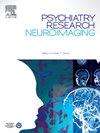Emotion recognition in individuals with elevated internet addiction scores: An event-related potential study
IF 2.1
4区 医学
Q3 CLINICAL NEUROLOGY
引用次数: 0
Abstract
The current study aims to elucidate the electrophysiological correlates of performance patterns in an emotion recognition task among individuals with higher internet addiction (HIA) scores compared to those with lower internet addiction (LIA) scores. Forty participants, with twenty in the HIA group and twenty in the LIA group, completed an emotion recognition task, involving five facial expressions: anger, fear, disgust, neutral, and sadness. Additionally, cognitive flexibility and working memory were assessed to examine their link to emotion recognition abilities. No significant differences in accuracy or reaction times (RTs) were observed between the groups in the emotion recognition task. However, the HIA group showed reduced P150 amplitudes, but increased N250 amplitudes relative to the LIA group. There was a positive correlation between the RTs and cognitive flexibility, only in the LIA group. Although the groups demonstrated comparable behavioral performance, the stages of stimuli processing differed. The LIA group appeared to process the stimuli more efficiently in the early stage, while the HIA group required greater effort in decoding the stimuli at a later stage. This suggests that the HIA group may rely on over-processing at a later stage due to reduced early processing efficiency, potentially suggesting an early vulnerability marker.
高网络成瘾个体的情绪识别:事件相关电位研究
本研究旨在阐明高网络成瘾(HIA)个体与低网络成瘾(LIA)个体在情绪识别任务中的表现模式的电生理相关性。40名参与者,其中20名来自HIA组,20名来自LIA组,完成了一项情绪识别任务,涉及五种面部表情:愤怒、恐惧、厌恶、中性和悲伤。此外,研究人员还评估了认知灵活性和工作记忆与情绪识别能力的关系。在情绪识别任务中,两组之间的准确性和反应时间(RTs)没有显著差异。然而,相对于LIA组,HIA组的P150振幅降低,但N250振幅升高。RTs和认知灵活性之间存在正相关,只有在LIA组。虽然两组表现出相似的行为表现,但刺激处理的阶段不同。LIA组似乎在早期阶段更有效地处理刺激,而HIA组在后期需要更大的努力来解码刺激。这表明HIA组可能在后期依赖于过度处理,因为早期处理效率降低,这可能表明早期存在漏洞标记。
本文章由计算机程序翻译,如有差异,请以英文原文为准。
求助全文
约1分钟内获得全文
求助全文
来源期刊
CiteScore
3.80
自引率
0.00%
发文量
86
审稿时长
22.5 weeks
期刊介绍:
The Neuroimaging section of Psychiatry Research publishes manuscripts on positron emission tomography, magnetic resonance imaging, computerized electroencephalographic topography, regional cerebral blood flow, computed tomography, magnetoencephalography, autoradiography, post-mortem regional analyses, and other imaging techniques. Reports concerning results in psychiatric disorders, dementias, and the effects of behaviorial tasks and pharmacological treatments are featured. We also invite manuscripts on the methods of obtaining images and computer processing of the images themselves. Selected case reports are also published.

 求助内容:
求助内容: 应助结果提醒方式:
应助结果提醒方式:


